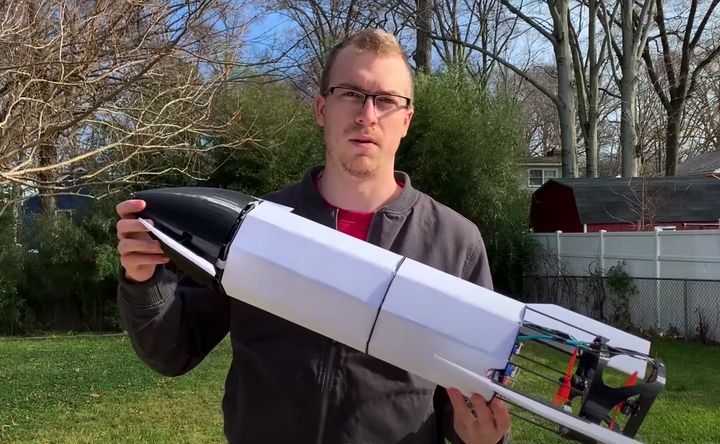
This week’s selection is the Radio Controlled SpaceX Starship Belly Flop by Nicholas Rehm.
Rehm is a graduate student at the University of Maryland, and he seems to have a very interesting hobby: replicating actual aircraft with RC equipment. His YouTube channel is filled with his experiments with VTOL aircraft, biplanes and other strange drones.
Recently he embarked on a very challenging project: replicate SpaceX’s Starship’s highly unusual landing maneuvers.
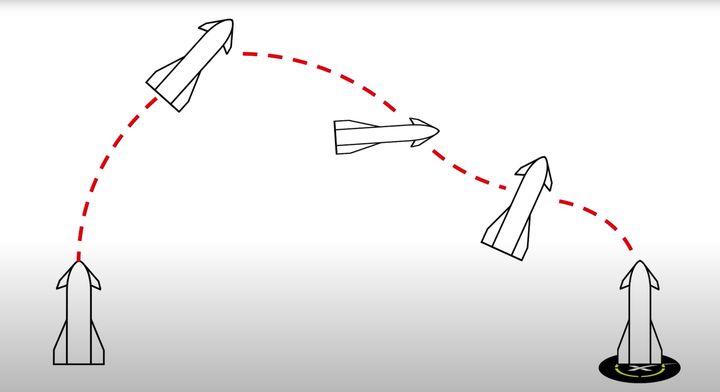
If you’re not familiar with the Starship concept, SpaceX is developing a revolutionary spacecraft that returns to Earth in a unique way: instead of gliding like the Space Shuttle or crashing through the atmosphere in a capsule, the Starship does a “belly flop” and sails like a parachute jumper. Fins and canards control the movement during this phase of the flight. The flight ends near the surface when the ship tilts back on its engines and gently alights on the landing pad.
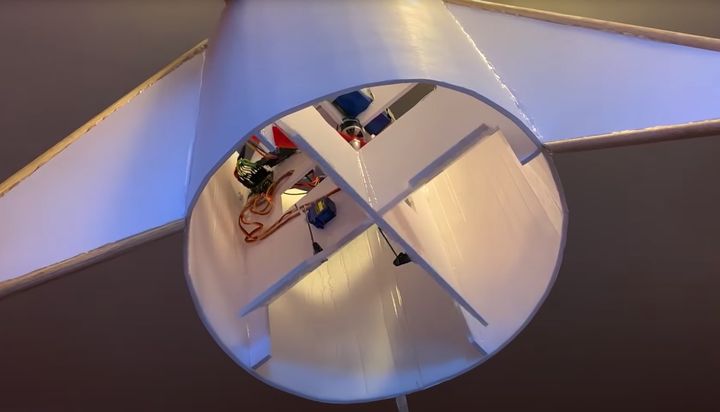
Rehm sought to duplicate this maneuver using a custom-designed RC craft. Instead of using actual rocket engines, which would have made the project incredibly complex, he instead used regular drone props that could be tilted to provide “thrust vectoring”. This capability allows the RC craft to hover and perform a controlled landing.
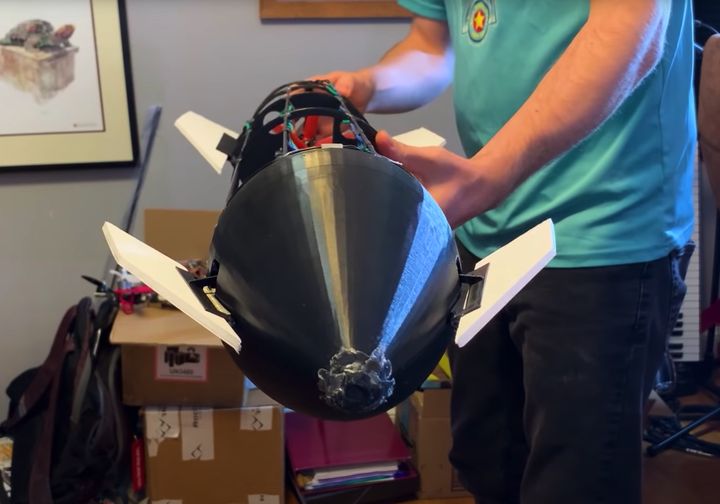
He also equipped the RC Starship with fins and canards (fins at the top) in just the same way as the actual Starship.
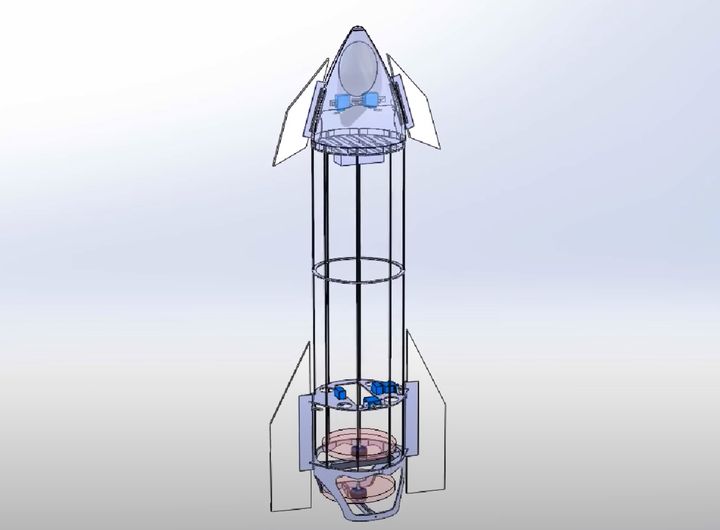
Rehm designed the RC Starship in Solidworks, and then 3D printed most of the complex parts. The hull was simply foam boards, and rigid rods provided the skeleton for attachments.
This is a challenging project because the control mechanisms are quite different from standard drones and other RC equipment. Rehm had to custom-design the software to properly control this unusual vehicle, and as you’ll see in the video, there were plenty of iterations required to work out the bugs. And he’s not finished yet.
In the end, Rehm was able to launch, belly-flop and land the RC Starship in a reasonable facsimile of the actual flight path used by SpaceX. I have a feeling he’s continuing on the project and will most likely publish a future video of a more complex flight.
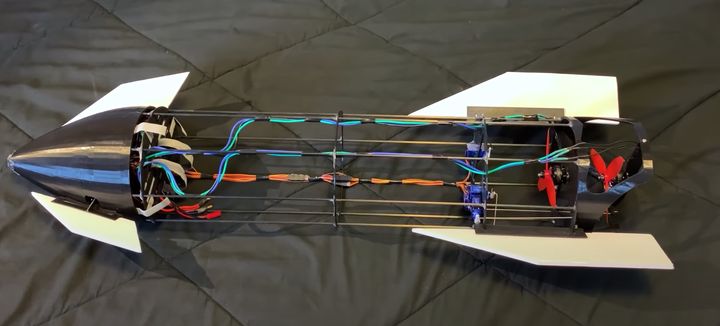
This project shows the power enabled by 3D printing, as most of the components were designed in CAD and 3D printed on Rehm’s Creality Ender desktop 3D printer. There’s no end to the possibilities when combining 3D printing with imagination.
The project also shows the astonishing radical path SpaceX has chosen for their Starship project. While Rehm has troubles getting his 1m custom RC Starship to work, SpaceX is flying the real thing, and getting it almost right the first time through.
To put this in perspective, SpaceX’s Starship is 70m tall, 70X the size of Rehm’s replica. It’s literally the size of a 15-story building. Now, imagine a 15-story building flying, flipping over and landing. That’s something you should see if you haven’t already, and be sure to watch all the way to the end:
Here’s another view, with crowd reactions, and be sure to watch the “landing” to see how close to the ground the belly-flop takes place. Scary!
Via YouTube

This is such an audacious project!
I’m very impressed that it flew so well.
Wishing you the best of success in future times.